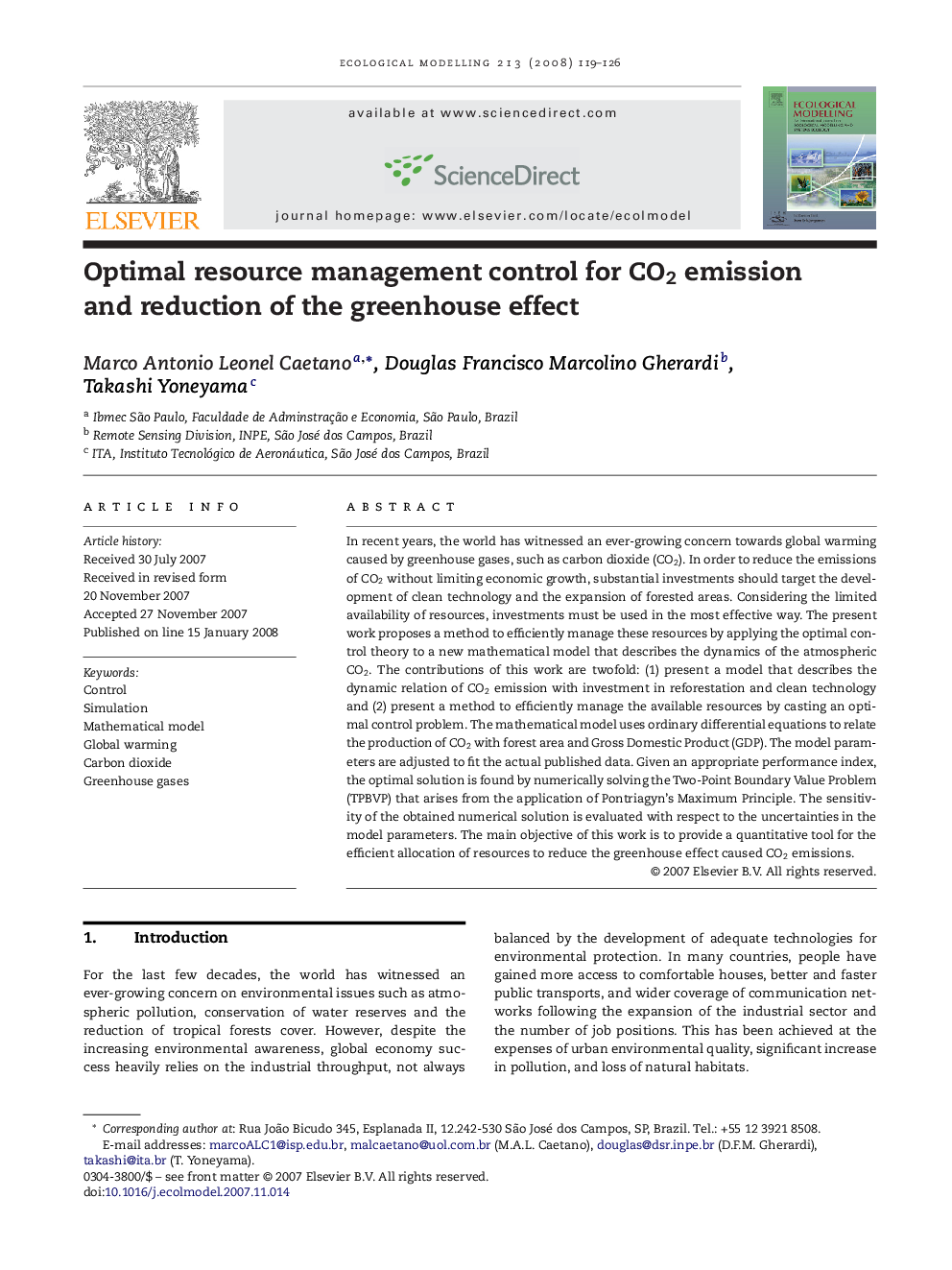| Article ID | Journal | Published Year | Pages | File Type |
|---|---|---|---|---|
| 4377879 | Ecological Modelling | 2008 | 8 Pages |
Abstract
In recent years, the world has witnessed an ever-growing concern towards global warming caused by greenhouse gases, such as carbon dioxide (CO2). In order to reduce the emissions of CO2 without limiting economic growth, substantial investments should target the development of clean technology and the expansion of forested areas. Considering the limited availability of resources, investments must be used in the most effective way. The present work proposes a method to efficiently manage these resources by applying the optimal control theory to a new mathematical model that describes the dynamics of the atmospheric CO2. The contributions of this work are twofold: (1) present a model that describes the dynamic relation of CO2 emission with investment in reforestation and clean technology and (2) present a method to efficiently manage the available resources by casting an optimal control problem. The mathematical model uses ordinary differential equations to relate the production of CO2 with forest area and Gross Domestic Product (GDP). The model parameters are adjusted to fit the actual published data. Given an appropriate performance index, the optimal solution is found by numerically solving the Two-Point Boundary Value Problem (TPBVP) that arises from the application of Pontriagyn's Maximum Principle. The sensitivity of the obtained numerical solution is evaluated with respect to the uncertainties in the model parameters. The main objective of this work is to provide a quantitative tool for the efficient allocation of resources to reduce the greenhouse effect caused CO2 emissions.
Related Topics
Life Sciences
Agricultural and Biological Sciences
Ecology, Evolution, Behavior and Systematics
Authors
Marco Antonio Leonel Caetano, Douglas Francisco Marcolino Gherardi, Takashi Yoneyama,
